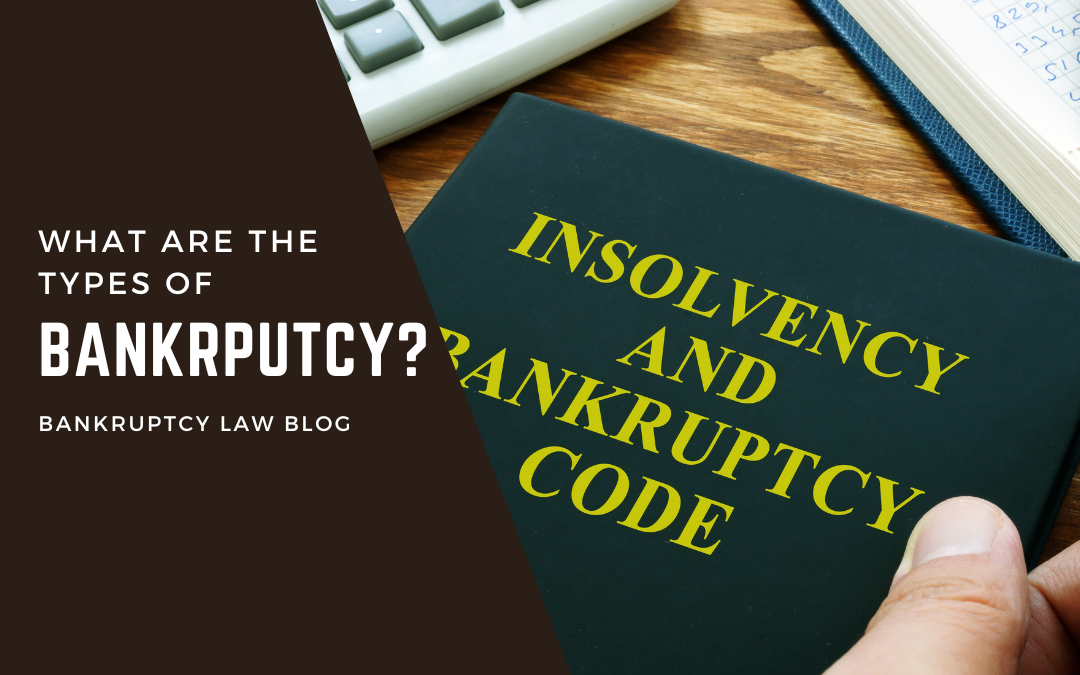There are six types of bankruptcy that address different situations and needs.
These include:
Chapter 7
Chapter 7 is the most common form of bankruptcy for individuals. It’s sometimes also referred to as liquidation or straight bankruptcy.
Chapter 7 bankruptcy helps people discharge their unsecured debts like medical bills and credit cards by selling their assets (or anything you own that has value). Exempt assets vary from state to state.
In this situation, a court-appointed trustee typically oversees the sale (or liquidation) of your assets, which are used to pay off your creditors.
At the end of the process, most parties will be debt-free or mostly debt-free. All unsecured debts such as personal loans or credit cards are “wiped clean.” Certain secured debts such as auto loans may be negotiated for repayment. Debts such as more IRS taxes, child or spousal support, drunk driving penalties or judgments, and student loans are prohibited from discharge by the Bankruptcy Code.
Chapter 9
There are cases in which the entity seeking debt relief is neither a person nor a business. Municipalities can also run into financial distress that prevents them from meeting obligations to their creditors. For the purposes of bankruptcy, the term municipality has in the past been applied to: cities, counties, townships, school districts, and public improvement districts, bridge authorities, highway authorities, and gas authorities.
Filing for Chapter 9 bankruptcy grants them protection from creditors while they create a plan for adjusting their debts. They do not have to liquidate their assets.
Chapter 11
Chapter 11 bankruptcy is typically used by struggling businesses that want an opportunity to restructure their debt for future repayment while continuing to operate. Occasionally, individuals can also file for this type of bankruptcy.
In this form of bankruptcy, the business remains in control of operations and does not sell off all their assets. The goal is for the business to restructure their debts so they can be repaid while having time to create a plan to become profitable again. For instance, the company may be able to cut costs or find additional ways to increase revenue.
Chapter 12
Family farms and fisheries under financial strain can use Chapter 12 bankruptcy. As part of the filing, they develop a plan to repay creditors.
This industry-specific type of bankruptcy provides streamlined procedures that allow filers to reorganize business affairs, repay all or part of their debts, and continue operating. Unlike Chapter 11, the bankruptcy is not discharged when the plan is made, but instead when all payments have been completed. Most repayment plans span three to five years.
Chapter 13
Along with Chapter 7, Chapter 13 is the most common form of bankruptcy filed in the United States. This version of bankruptcy is most often used by individuals with jobs, or “wage-earners” to reorganize their finances and debts under a repayment plan.
Filers are required to complete all repayment within three or five years. To be eligible, a consumer must have a regular source of income, and their total debt must not exceed the parameters set forth in the Bankruptcy Code. Once a repayment plan is in place, and for as long as the debtor makes timely payments, creditors are legally restrained from continuing or initiating collection efforts.
Under Chapter 7, all debts qualifying are fully discharged, which means that all pertinent lines of credit are closed and inaccessible. Under Chapter 13, debtors are able to keep more of their assets, and under certain repayment plans, and keep credit accounts even if use is temporarily restricted. A simplified way of describing the difference between Chapters 7 and 13 is that 7 makes the debt go away, while 13 allows you to make good on the debt.
Chapter 15
Chapter 15 bankruptcy is used to deal with cross-border situations where the debtor, creditors, assets, or other involved parties are in more than one country. This form of bankruptcy allows for cooperation when more than one country is involved.

